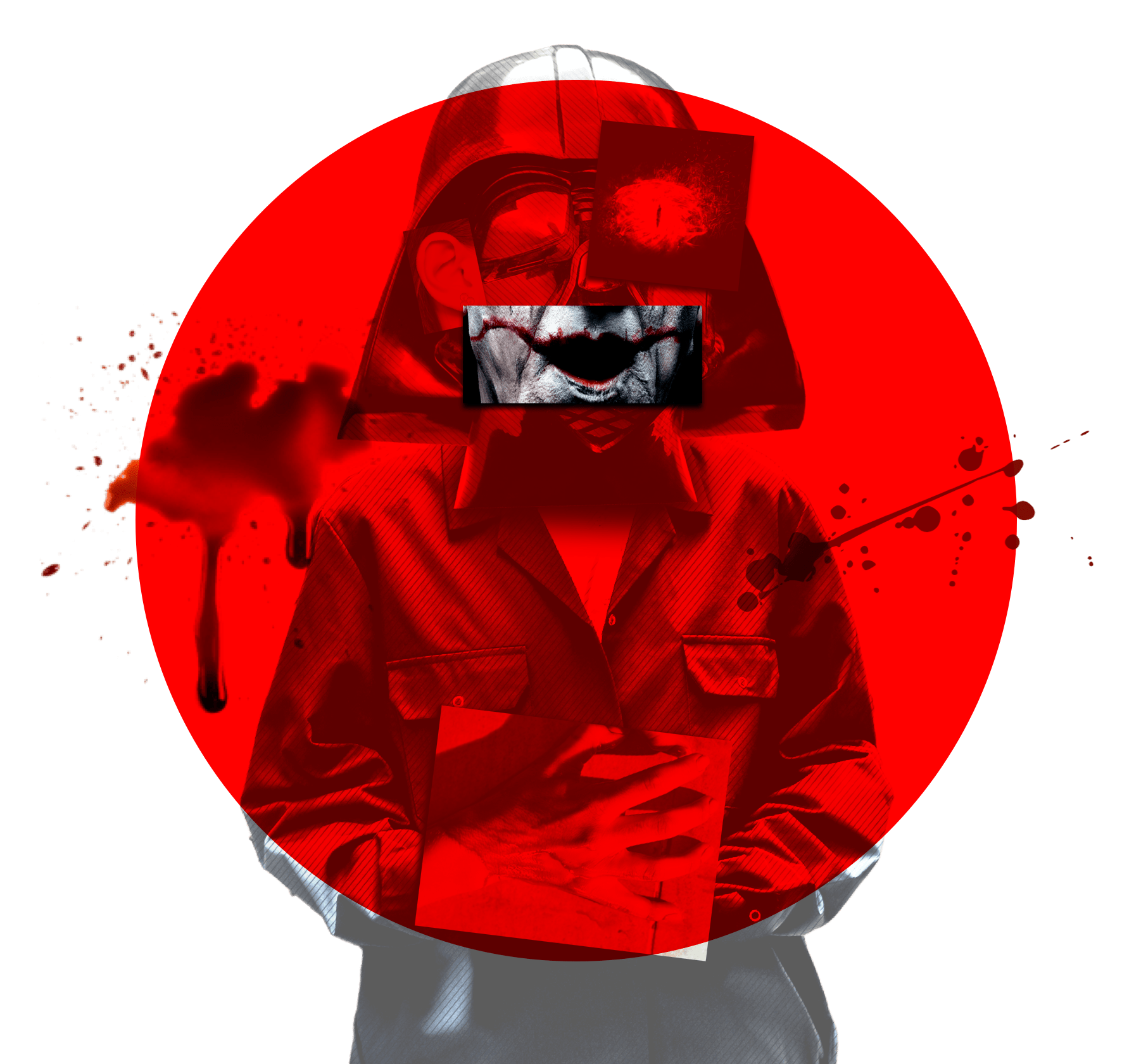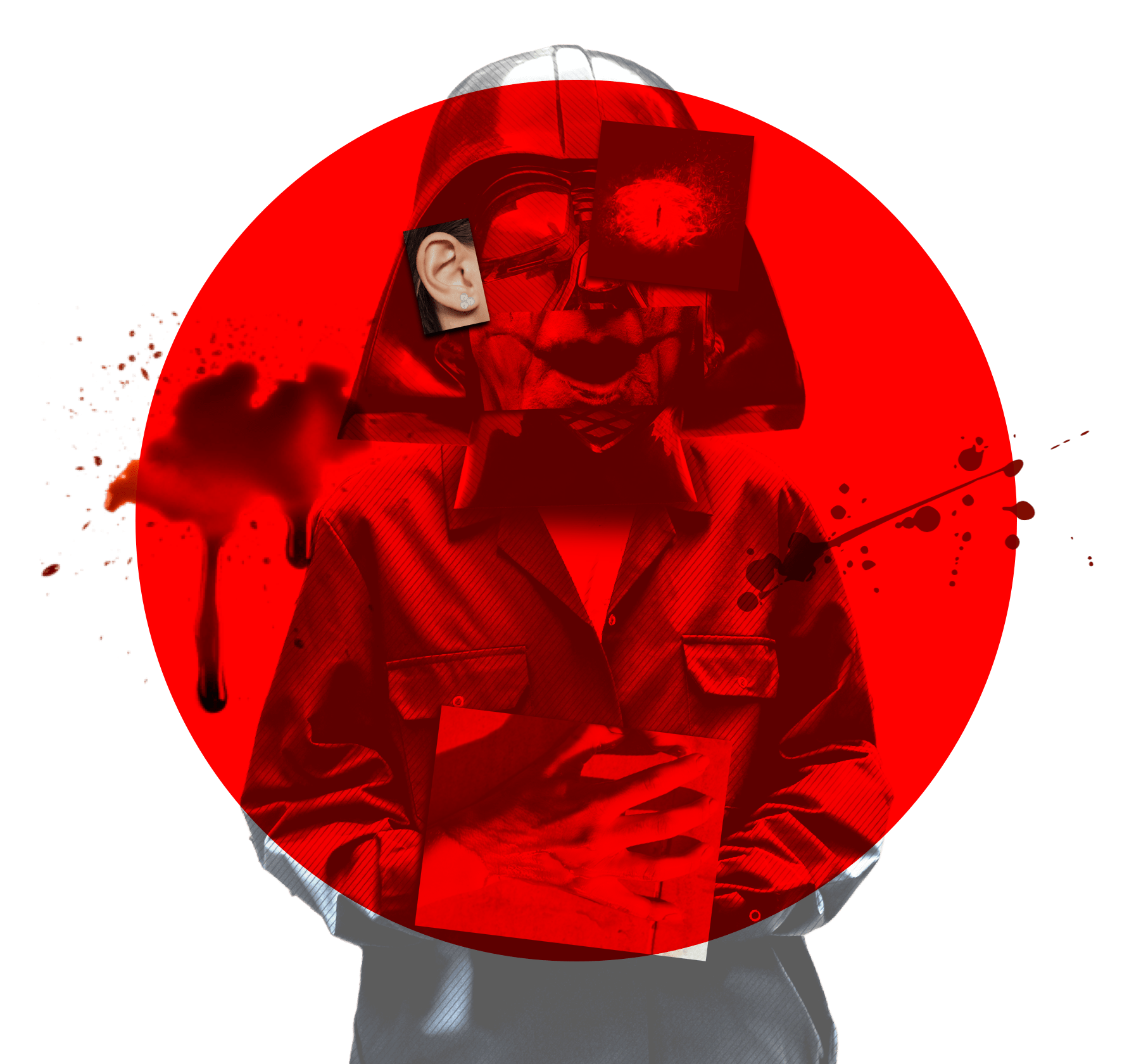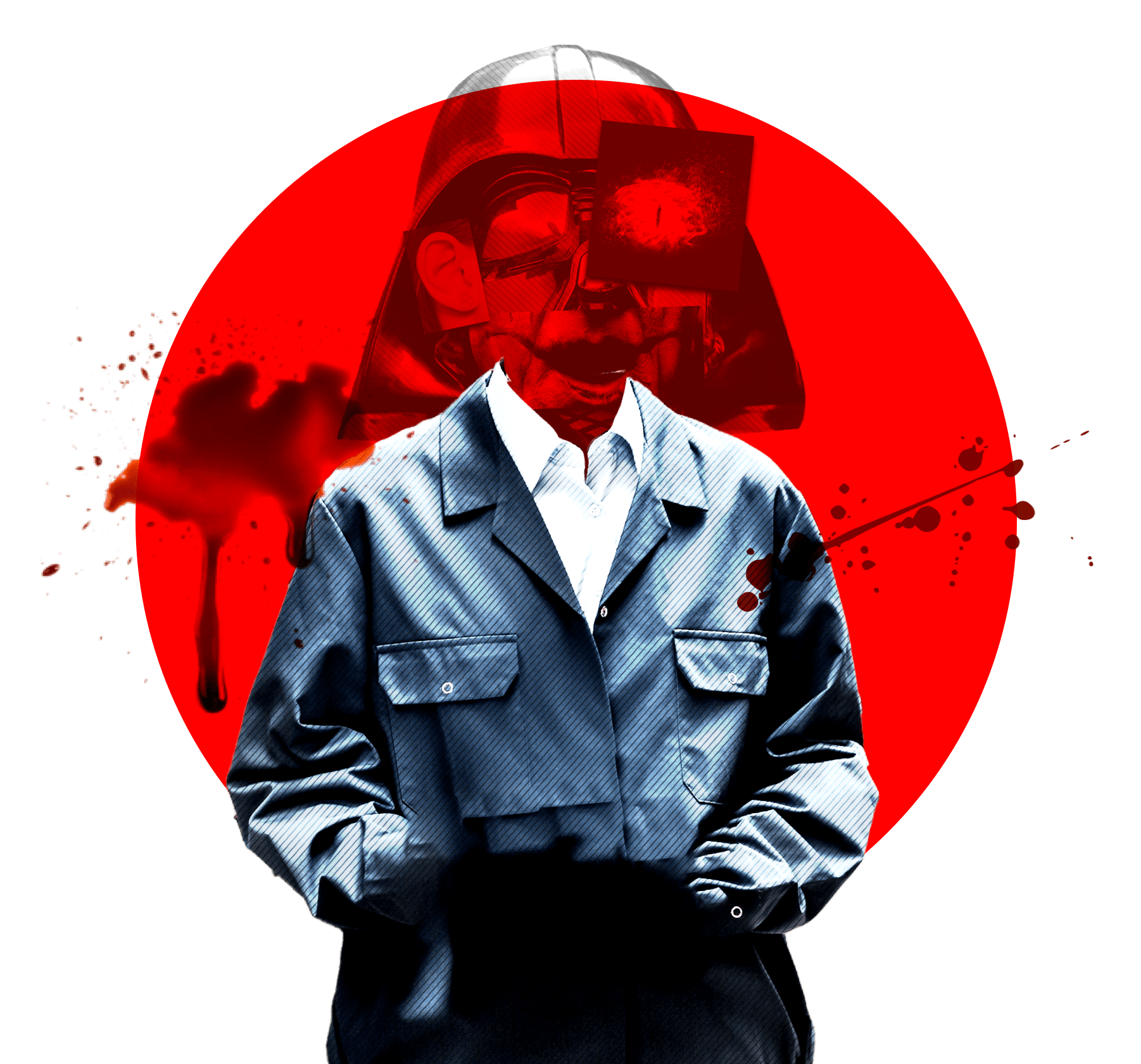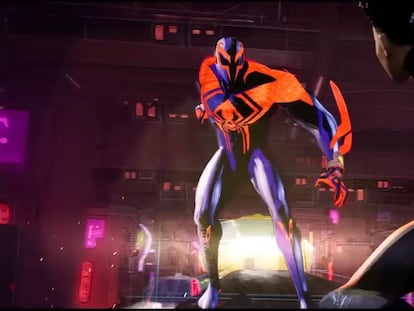Bad to the bone: This is how you create the perfect villain
EL PAÍS has put together a collection of various icons of cruelty — hailing from cinema, literature and comic books — to craft a portrait of the ideal nemesis. We take a look at why the public adores these villains even more than heroes
Stopping the villains is the goal of any superhero. But at least once — just before he tightens the handcuffs around their wrists — Batman should thank them.
The Joker, Penguin, or Two-Face have kept him — and all of Gotham city — awake for more than one night. However, they also made legends out of the superhero. Only a Dark Knight could defeat such tough opponents. Although, lately, the mission of the good guys seems to be getting more and more difficult. Because the bad guys have learned to capture not only cities, but also hearts.
In the past, they just stole money. Today, they’ve gained prominence: they have their own comics, movies, TV series, novels and essays. Along with legions of followers… and even tributes. A collection of comics — titled One Bad Day — is set to be published by DC Comics later this summer. It pays tribute to every different enemy that the Batman faced off against.
Cruella De Vil terrorized 101 dalmatians and many more children. And, thanks to this, she deserved an entire film just for herself. Darth Vader lost the lightsaber duel to Luke Skywalker, but he crushes his son in terms of fame, with his name generating twice as many search results on Google. And Hannibal Lecter had plenty of reasons to show his teeth: he’s the image that remains from The Silence of the Lambs.
“The villain is the key figure in the evolution of today’s cinema… we could say that he’s even more important within the story than the hero himself,” write Spanish cinema scholars Rosalía Linde and Ignacio Nevado, in a paper about the development of villains in film. “We haven’t chosen most of our favorite fictional characters for their virtues, but for the fascination and concern that their vileness arouses in us,” argues the book In Praise of Degradation, by the philologist Carlos Clavería Laguarda. It may be that so much defeat has resulted in villains improving themselves… or that seducing the public is part of their new plan for world domination. But the truth is that creators are taking more and more care to strengthen these characters’ magnetism.
“It used to be enough for them to be bad. Now, the audience asks for more nuance. They want to empathize [with the villains], even if they condemn their choices,” adds writer Emma G. Rose, who has created quite a few malevolent characters in her fantasy novels. “As human beings, we want good stories. And they must have a villain. If not, they’re bland,” adds Tori Telfer, the author of two books about murderers and con artists from the past.
Necessary. Fascinating. Terrifying Complex. And, perhaps, even a bit similar to their rivals.
“In the first decade of the 21st century, the line between hero and villain is blurred,” highlights an essay by Linde and Nevado. For these and other reasons, EL PAÍS has tried to reconstruct the ideal villain, based on the traits of some of the most famous ones. This portrait has been drawn out from more than a dozen interviews, as well as extensive searches through lists put out by organizations such as the American Film Institute.
Scroll and discover the characteristics that make up the perfect villain.







THE JOKER’S WILD SMILE
When Javier Bardem received the script for No Country for Old Men, he thought: “I have to do this.” He was referring to that wonderful story that every actor wants, but only comes along once in a while. The terrible character of Anton Chigurh — conceived by the Coen brothers — took Bardem all the way to an Academy Award for Best Supporting Actor.
In the history of cinema, the bad guys are prominent. “They tend to be better written. They allow authors to take risks, with more creative freedom,” stated Luis Zahera, just before winning a Goya Award in 2023 for portraying a disturbed villager in The Beasts.
By definition, villains renege on rules and break limits. It’s the hero who is in charge of maintaining order. They, on the contrary, seek to destroy it. “They come in all shapes, genders, races or religions,” adds Michael Baser, producer and head of the writing department at the Vancouver Film School. The Terminator, the Annabelle doll, the HAL 9000 computer, Freddy Krueger, or Agatha Trunchbull — the principal from Matilda — are there to prove him right, among thousands of other examples.
According to critics, much of the success of the Avengers films was due to a worthy enemy: Thanos. The comic book storyline Kraven’s Last Hunt isn’t considered to be one of the best Spider-Man comics because of its protagonist, but because of how a tormented villain pushes Peter Parker to his limit. Of course, perhaps the villain par excellence is the Joker — he was already rebelling since his first adventure, back in 1940. He was supposed to die, but his impact led DC Comics to keep him around: “He's going to survive!” a doctor yelled. More than 80 years later, he’s still healthy. Cartoonists, scriptwriters and actors have passed away, but the character has maintained his reign in the midst of chaos: he belongs to comic book history, while his portrayal in movies since the 1960s — by actors such as Jack Nicholson, Heath Ledger and Joaquin Phoenix — has made a dent on the big screen. He will return again soon, in his highly-anticipated second solo film… and this time, it’s a musical.
DARTH VADER’S DOUBTS
“A truly fascinating villain isn’t totally irredeemable. We have to ask ourselves if maybe, just maybe, they can change their mind,” says Tori Telfer. For this, the bad guy must have been good before. Or, at least, be receptive to another vision of the world. This allows Darth Vader to reflect for a moment, before it’s too late; it lets a group of ghosts teach Mr. Scrooge a lesson, or allow the Beast to become a beautiful prince. And vice versa: the presumed hero of the video game The Last Guardian becomes a demon while obsessing over his mission, while Carrie — fed up with the torture that she suffers from — goes from victim to executioner in Stephen King’s novel and film adaptation. “The key to any captivating character — be it a hero or a villain — is a powerful story behind them,” sums up Michael Baser, who has written for various critically-acclaimed shows.
It turns out that light and shadows aren’t so far off. The bad guys have their motives, they suffer from their traumas…. and, sometimes, they’re even right. In One Bad Day: The Riddler, screenwriter Tom King portrays Batman's most witty enemy as a child crushed by pressure and abuse. In a variety of comics and movies, Venom Spiderman's most feared nemesis — suffers from inner struggles, terminal illnesses in his family, as well as injustice. And anyone who has seen American Psycho remembers the shower sequence… but also Norman Bates' unhealthy relationship with his mother.
The great villains provoke fear, but also compassion. Or even admiration. To eliminate his beloved Sherlock Holmes, the writer Arthur Conan Doyle created Professor Moriarty – someone just as insightful and brilliant… only from the other side. Although, in reality, even this is debatable: despite two millennia of debates, the fields of ethics and philosophy are still unclear about what, precisely, is good or evil.
NURSE RATCHED’S CRUELTY
It’s clear that Joker is scary. But even more frightening, perhaps, is what he snaps at Batman in The Killing Joke , written by Alan Moore: “'All it takes is one bad day to reduce the sanest man alive to lunacy!” To put it another way: we could all easily be the Joker. Horror is populated with monsters and nasty creatures… but countless essays have studied how political propaganda dehumanizes the enemy. A villain can be terrifying, but demonization also provides a certain level of comfort.
History and culture, however, are full of contradictory examples. Starting with the Holocaust – humans slaughtering humans – as Hannah Arendt showed with her theory on the banality of evil. Or as Éric Vuillard relates in his novel The Order of the Day, about a secret meeting of German industrialists who decided to support Hitler out of pure economic calculation. So many wicked grains of sand, to add up to a desert of atrocities.
“A villain based on reality is much scarier, because it means that they can exist and that it’s even possible to [encounter them],” notes writer and actor Rikki Lee Travolta. “Monsters are scary… but an evil family member is scarier,” Tori Telfer concludes. In her books Lady Killers and Confident Women , the writer and journalist has gathered dozens of examples of ladies who use arsenic, grannies who are unscrupulous and sisters who scam.
Similar cases appear in the news every day. Hamlet, A Clockwork Orange, The Last of Us, Crime and Punishment, The Shining or The Night of the Hunter have disturbed the dreams of many. David Fincher's Mindhunter series narrates how the FBI began to study the psychological profile of serial killers, as society’s obsession with true crime continues. “It’s true that anyone can become the Joker. Although I think it would take more than one bad day… perhaps a bad life, crushed under the yoke of the law or society over and over again,” Telfer adds. Or from living under the cruelty of Nurse Ratched, from One Flew Over the Cuckoo's Nest: instead of being healed, you end up being tortured. A reverse treatment, to prove the Joker right: even the sanest patient can end up going crazy.
THE MIGHTY EYE OF SAURON
There is no great villain that’s easy to defeat. On the contrary: the more complex, the better. The most exciting moments in an action video game usually coincide with the so-called “boss fights” — fights against particularly tough enemies. Anyone who has enjoyed the God of War saga knows this. Although there’s even one step further, where excitement is mixed with dread: in survival horror video games, the adversary simply cannot be defeated. You can only dodge them, or run away. As an example, one can think of the Xenomorphs, from the Alien saga. The perfect killing machines in movies and relentless stalkers in video games, the unpredictable behavior of these creatures prevents players from learning how to avoid them.
“All villains represent fear. Even bad guys like Gordon Gekko (Wall Street) or Mr. Burns, who embody the terror of losing everything to the most atrocious kind of neoliberalism,” explains Manu González, a comic book critic and the author of Fantastic Villains. In his bestseller Supergods: What Masked Vigilantes Can Teach Us About Being Human, screenwriter Grant Morrison shows the commonalities between the most popular villains in comics and the dominant fears of each era. In the 1940s, gangsters, maniacs and thugs marked the public fear; in the 1980s, “corporate predators” replaced them.
“It wasn't until the turn of the century that a new approach [...] crystallized around a terrible idea: what if the villains have already won?” Morrison suggests. They certainly don’t lack power – in addition to vileness, bad guys usually have some other exceptional gift, be it money, strength, cunning, relentlessness, charisma, or a superpower of some sort. A hero’s challenge is defined by this: how do you hide from Sauron's flaming eye when it sees everything? How do you overthrow a lion who is willing to kill his own brother? The greater the threat, the more a Lieutenant Ripley or a James Bond is needed. Sometimes, all the bastions of good must come together: just think of all the DC superhero sagas.
At the same time, a good author must know how to curb the excesses of his villain. And, above all, make them attractive. “Of course, I worry about having too much empathy or forgetting about the victims. It’s a fine line and there are no easy answers: you keep walking and you hope you walk decently,” Tori Telfer reflects. For instance, many viewers loved the series Narcos… others, however, lamented such a magnetic portrayal of Pablo Escobar. The gangsters in The Godfather were very bad, but also glamorous and unforgettable. In a totally different artistic choice, the creators of the Italian crime series Gomorrah strived to make the troublemakers despicable in the eyes of the public — and they succeeded.
THE BLOODY HANDS OF LADY MACBETH
The stories were written by them, about them and for them. This has been the case for centuries. Hence, the great villains – like the heroes – were almost always exclusively men
In her essay From Hitler to Voldemort, Sara Martín Alegre writes that villains are the “the central elements of cautionary fables about the risks of accumulating excessive power, which is the essence of patriarchy.” It may be that witches and femmes fatales represent the main exceptions to the dominant narrative… although these portrayals are often steeped in prejudice.
Perhaps women weren’t considered worthy of fear… though Tori Telfer disagrees with this, pointing out that “criminals have benefited from the idea that they cannot commit crimes. It's important to remember that most violent criminals are male, which explains why many villains are as well. At the same time, there's always been the idea that women are evil, twisted [and] fake, so I don't think we can attribute this phenomenon to the traditional female image.”
“It's easy to blame machismo. But the truth is more complex. We need to answer questions like: why do men kill more than women? Do women secretly want to be more violent than they are, but society won't let them? Where does the impulse towards violence come from?”
Two centuries ago, Ursula tried to ruin the life of Ariel in The Little Mermaid. Lady Macbeth's hands have been stained with blood for generations. And, back in 1987, Stephen King wrote Misery, creating the kidnapper that Kathy Bates later portrayed on screen. All of these female villains were conceived by men, often marked by gender stereotypes. However, things are changing: think of Cersei Lannister, the White Witch, Harley Quinn, Nina Myers, or Aunt Lydia. These characters are by no means lacking in depth. Even Batman or Thor have recently been threatened by powerful female enemies.
THE RELENTLESS MICHAEL MYERS
An expressionless white mask. A kitchen knife. And an insatiable thirst for blood. The hunt for poor Laurie by murderer Michael Myers began in 1978. It continues to this day, nearly half-a-century later, with 13 movies in the Halloween saga so far. The films illustrate just how obsessive a nemesis can be when it comes to eliminating the hero, while also offering another example of an evil, traumatized person who is coveted by the public. The successful supervillain continues to be exploited… although the disappointing box office revenue from Halloween Ends – the latest installment, released in 2022 – has frozen the production of further sequels. For now, at least.
“Italo Calvino once said that the hero would continue to be more important than the villain, if literature wished to remain a moral fact. [But] since the novel is mostly an editorial or industrial genre, the villain is more important, because he [brings in more revenue]. The characteristics of the villain don’t only depend on the creativity of the author, but also on the intentions of sales directors,” Carlos Clavería Laguarda emphasizes. He’s speaking about literature, but he may as well be speaking about other artistic fields. To boost the buzz around the Obi-Wan series, Disney brought back Darth Vader. But not even the latest fight between master and disciple could stop a flurry of criticism. Nor has the recent fifth installment of Scream had any better luck. Several reviews indicated that the identical repetition of misdeeds lessened fear of — and respect for — the villains. It turns out that the villain the spectator fears the most is boredom.








